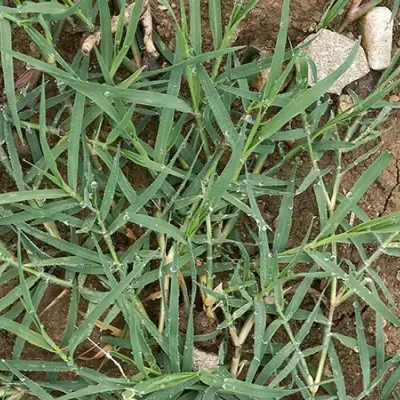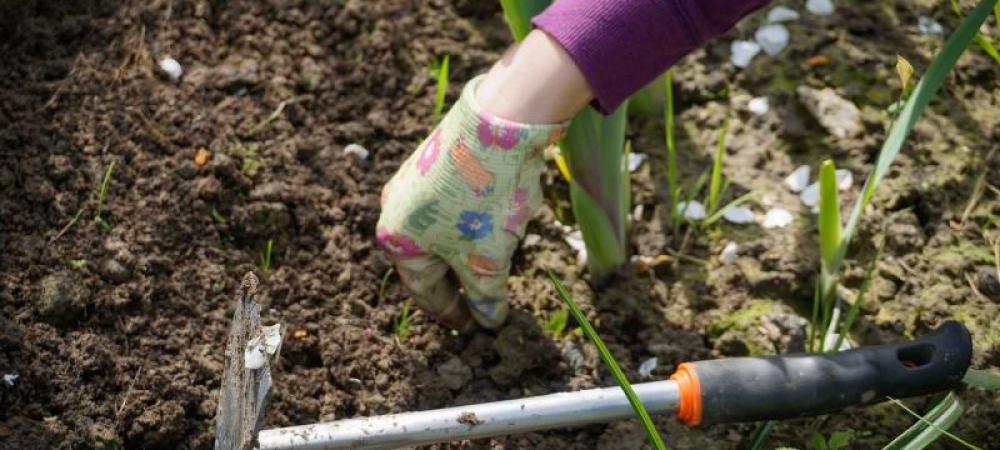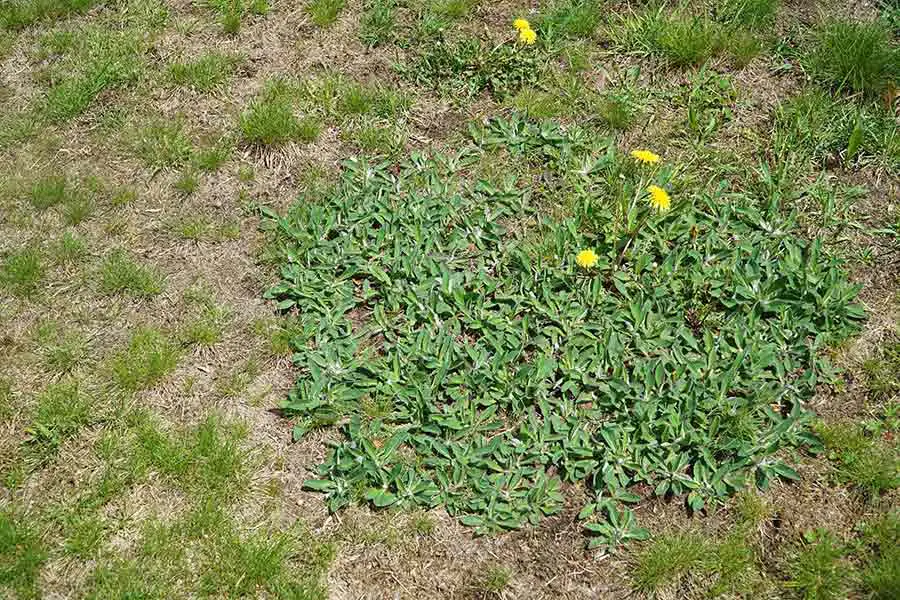Are you tired of battling weeds in your Kansas garden? You’re not alone.
These persistent invaders can quickly take over, stealing nutrients and sunlight from your beloved plants. But before you throw in the trowel, let’s explore the most common weeds you might encounter in your Kansas garden. Understanding these unwelcome guests is the first step in reclaiming your green space.
By the end of this article, you’ll have the knowledge to identify and control these pesky plants, making your garden a thriving haven once again. Are you ready to transform your gardening woes into wins? Let’s dive in!

Credit: qualityallcarelawnservices.com
JUMP TO TOPIC
Common Garden Weeds In Kansas
Kansas gardens face a common challenge: persistent weeds. These intruders compete with desired plants for resources. They can quickly overrun a garden if left unchecked. Understanding these weeds is crucial for any gardener. Let’s dive into the most common garden weeds found in Kansas.
Identification Tips
Identifying weeds is essential for effective control. Dandelions are easily recognized by their yellow flowers. They have a thick taproot that can be hard to remove. Crabgrass appears as sprawling green clumps. It thrives in sunny areas. Bindweed has white or pink funnel-shaped flowers. It wraps around other plants, causing them to struggle. Purslane features thick, succulent leaves. It spreads low to the ground. Knowing these features helps in spotting weeds early.
Impact On Gardens
Weeds affect gardens in multiple ways. They steal nutrients from the soil. This weakens the growth of desired plants. Weeds also attract pests, increasing the risk of infestations. Some weeds release chemicals that inhibit plant growth. Bindweed can suffocate plants by wrapping around stems. Over time, a garden can become overrun with weeds. This reduces its aesthetic appeal and productivity. Regular monitoring and control are necessary.
Dandelions
Dandelions are the quintessential garden intruders in Kansas. Their bright yellow flowers can be a cheerful sight, but they often overstay their welcome. Despite their reputation as pesky weeds, dandelions are surprisingly resilient and can even be beneficial in small doses. But when they start taking over your garden, it’s time to take action.
Growth Patterns
Dandelions are masters of survival. They thrive in a variety of conditions and have a knack for spreading rapidly. One day you might spot a single flower, and before you know it, your garden is a sea of yellow. They grow best in sunny areas with well-drained soil, but can easily adapt to less hospitable spots.
Their deep taproots allow them to access nutrients that other plants can’t, making them incredibly hard to remove completely. Once established, dandelions produce seeds that can travel miles on the wind. This ability makes them not just a neighborhood problem, but a statewide one.
Control Methods
So, what can you do to keep dandelions at bay? The key is consistency. Regularly inspect your garden and remove dandelions before they go to seed. You can pull them out by hand, but make sure you get the entire root. Otherwise, they’ll be back in no time.
Consider using a dandelion fork for efficient removal. It helps you dig deep without disturbing your other plants. If manual removal isn’t cutting it, there are organic herbicides that can help. Be cautious and follow the instructions to avoid harming your garden’s ecosystem.
Ever thought about using dandelions to your advantage? Their roots can break up compacted soil, and their leaves can be added to your compost pile. Could this be nature’s way of helping you maintain a healthy garden? While controlling them, consider the small benefits they bring.
What’s your strategy for dealing with dandelions? Is there a method that works well for you? Share your experiences and tips with fellow gardeners in the comments below.
Crabgrass
Crabgrass often invades Kansas gardens, spreading quickly across lawns. This stubborn weed thrives in warm weather, competing with plants for nutrients. Recognizing its distinctive broad leaves helps in managing its growth.
Crabgrass is a notorious invader in Kansas gardens, often challenging even the most diligent gardeners. This resilient weed thrives in warm weather and can quickly turn a lush lawn into a patchy mess. Despite its unassuming appearance, crabgrass can be a formidable opponent if not managed effectively.Seasonal Challenges
Crabgrass peaks during the hot summer months. Its growth accelerates as temperatures rise, making it a constant battle for gardeners. You might notice it starting in late spring, but by midsummer, it’s often in full force. Have you ever spent hours removing crabgrass only to see it return? Many gardeners face this frustration. Understanding its seasonal patterns can help you tackle it more effectively.Prevention Strategies
Prevention is better than cure when it comes to crabgrass. Start by maintaining a healthy lawn. Dense grass can inhibit crabgrass seeds from germinating. Using pre-emergent herbicides in early spring can stop crabgrass before it starts. However, timing is crucial; apply them before crabgrass germination begins. Regular mowing helps too. Ensure your grass is cut at the proper height to shade the soil, preventing crabgrass growth. A personal tip: I once experimented with vinegar as a natural weed killer. Surprisingly, it showed some effectiveness on smaller patches. Have you tried any unusual methods?Bindweed
Bindweed, a common weed in Kansas gardens, spreads quickly and can choke plants. Its white flowers may look pretty, but it competes fiercely for nutrients, making it a nuisance for gardeners. Control methods are essential to prevent its aggressive growth.
Bindweed is a common adversary in Kansas gardens, notorious for its aggressive growth and resilience. This weed can quickly take over flower beds and vegetable patches, making it a gardener’s nightmare. If you’ve ever spotted its white or pink trumpet-shaped flowers, you know how deceptively charming it can appear. But don’t be fooled; beneath its beauty lies a relentless invader.Invasive Nature
Bindweed grows at an alarming rate, spreading through both seeds and its extensive root system. Its roots can penetrate deep into the soil, making it difficult to remove completely. Have you ever tried pulling it out, only to find it sprouting again days later? That’s because even a small fragment of the root left behind can regenerate. This weed competes with your plants for nutrients and space, often choking them out. Its vines can smother young plants, leaving them without sunlight. If not managed, bindweed can turn your lush garden into a tangled mess.Effective Treatments
Addressing bindweed requires persistence and strategy. Start by regularly pulling the weed to weaken its root system. Do this early before it flowers to prevent seed production. Consider using mulch to block sunlight and suppress its growth. You might find that a thick layer of organic mulch can deter bindweed from emerging. Chemical treatments can be effective but should be used with caution. Selective herbicides target bindweed without harming other plants. Always follow the instructions carefully to protect your garden’s ecosystem. Why not try companion planting? Some gardeners swear by planting competitive crops like potatoes, which can overshadow bindweed. Could this be a solution for you? Remember, consistency is key. Regular monitoring and treatment can keep bindweed under control and save your garden from its invasive grip. Have you ever had success with a particular method? Share your tips and learn from others.Chickweed
Chickweed, a frequent visitor in Kansas gardens, grows quickly and spreads widely. Known for its small, white flowers and oval leaves, this weed thrives in cool, moist conditions. Gardeners often find it challenging to control due to its fast growth.
Chickweed is a common weed that often sneaks its way into Kansas gardens, much to the dismay of gardeners. With its small star-like white flowers and bright green leaves, it might initially seem harmless. However, its rapid growth can quickly take over flowerbeds and vegetable patches. Understanding this weed’s preferences and how to effectively remove it is crucial for any gardener hoping to maintain a pristine garden.Habitat Preferences
Chickweed thrives in cool, moist environments. You might find it flourishing in the shade of trees or nestled among your garden beds in early spring. It seems to have a knack for popping up where you least expect it. Have you ever noticed it cropping up after a particularly rainy spell? It’s no coincidence. Chickweed loves damp soil, making it a frequent guest in gardens that are well-watered but not overly sunny.Removal Techniques
Getting rid of chickweed requires a bit of strategy. One effective method is hand-pulling, especially when the soil is moist. This ensures the roots are removed, preventing regrowth. Consider using mulch as a preventive measure. A layer of mulch can suppress chickweed by blocking sunlight and hindering its sprouting. If chickweed persists, you might need to use an organic herbicide as a last resort. Choose one that is safe for your plants and the environment. Why not take a stroll through your garden and see if chickweed has made a home there? Try these techniques and watch your garden flourish.Henbit
Henbit often invades Kansas gardens, thriving in the cool season. Its purple flowers add color but compete with plants for nutrients. Managing this common weed requires regular monitoring and removal to ensure healthy garden growth.
Henbit is a common sight in Kansas gardens. This weed belongs to the mint family. Henbit thrives in the cool months of the year. Its rapid growth can quickly take over your garden beds. Understanding this weed is key to managing its spread.Identification Features
Henbit has distinct characteristics. It grows to a height of about 12 inches. Its stems are square and slightly hairy. The leaves are rounded with scalloped edges. They sit opposite each other on the stem. Henbit flowers are small and purple. They form clusters at the tops of the stems. This weed often appears in early spring. Recognizing henbit early helps in controlling it.Management Practices
Controlling henbit involves several methods. Hand pulling is effective for small infestations. Ensure to remove the roots to prevent regrowth. Mulching can suppress henbit by blocking sunlight. A thick layer of organic mulch works best. For larger areas, use a pre-emergent herbicide. Apply it in late summer or early fall. This prevents seeds from sprouting. Regular garden maintenance reduces henbit presence. Keep your garden beds clean and healthy.Smartweed
Smartweed is a common weed found in Kansas gardens. Its scientific name is Polygonum pensylvanicum. This weed thrives in moist and disturbed soils. Recognizable by its slender red stems, smartweed has small pink or white flowers. It can quickly overtake garden spaces if not controlled. Understanding smartweed’s life cycle and eradication methods is crucial for gardeners.
Life Cycle
Smartweed is an annual plant. It begins its life cycle in early spring. Seeds germinate when the soil warms. The plant grows rapidly, reaching maturity by late summer. It flowers and produces seeds in fall. These seeds can survive winter in the soil. They ensure the next generation of smartweed returns.
Eradication Methods
Removing smartweed requires persistence. Regularly pull young plants by hand. This prevents them from seeding. Ensure you remove the entire root. Mowing can keep smartweed from flowering. This stops seed production. Applying mulch can also suppress its growth. It blocks sunlight from reaching the seeds. In severe cases, herbicides may be necessary. Choose a product safe for your other plants. Always follow the instructions carefully. Consistent monitoring and early action are key to success.

Credit: qualityallcarelawnservices.com
Clover
Clover is a common sight in Kansas gardens. Its lush green leaves and white blossoms can be misleading. While clover is often considered beneficial, it can disrupt garden harmony. It grows rapidly, competing with other plants for nutrients. Understanding clover’s impact is essential for effective garden management.
Soil Impact
Clover improves soil health by fixing nitrogen. This natural process enriches the soil. It provides essential nutrients for other plants. But excessive clover can lead to nutrient imbalance. It may favor clover over other garden plants. This imbalance affects plant growth negatively.
Control Options
Controlling clover requires persistence. Regular mowing helps manage its spread. Mowing reduces seed production. Hand-pulling is effective for small infestations. Ensure roots are removed completely. Mulching prevents clover from taking over. It blocks sunlight, hindering growth. Herbicides are a last resort. Use them carefully to avoid harming other plants.
Weed Control Techniques
Kansas gardens often face challenges with common weeds like crabgrass and dandelions. These persistent intruders compete for nutrients, crowding out desirable plants. Effective weed control techniques help maintain healthy and thriving gardens.
When it comes to managing a garden in Kansas, weeds are often the number one adversary. These pesky intruders can rob your plants of nutrients, sunlight, and space. If you’ve ever spent a Saturday afternoon wrestling with dandelions, you know the struggle is real. But fear not, because mastering weed control techniques can transform your garden from a battleground into a peaceful retreat. Let’s delve into some effective strategies to keep those weeds at bay.Organic Solutions
Organic solutions can offer a gentle yet effective approach to tackling weeds. One popular method is mulching, which involves spreading a layer of organic material like straw or grass clippings over the soil. This not only suppresses weed growth but also helps retain moisture. Another technique is hand-pulling, which is as simple as it sounds. It can be surprisingly therapeutic, turning a mundane task into a mindful moment. For smaller gardens, vinegar can be an excellent natural herbicide. Its acidity can kill weeds without harming the environment. Have you ever tried adding corn gluten meal to your soil? It’s a natural pre-emergent that can prevent weed seeds from sprouting.Chemical Controls
For those stubborn weeds that refuse to budge, chemical controls might be the answer. These are synthetic solutions that can effectively target and eliminate weeds. Herbicides come in two main types: pre-emergent and post-emergent. Pre-emergent herbicides prevent weeds from germinating, while post-emergent herbicides kill weeds that have already sprouted. It’s crucial to read labels carefully to ensure you’re using the right product for your specific weed problem. Safety is paramount, so wearing protective gear and following application instructions is a must. Chemical controls can be a quick fix, but they should be used judiciously to avoid harming your garden’s ecosystem. Which technique resonates with you? Your choice will shape your gardening experience and the health of your plants.
Credit: www.heartlandturf.com
Preventive Measures
Gardening in Kansas can be challenging due to persistent weeds. These unwanted plants can quickly take over, choking out your flowers and vegetables. Understanding preventive measures is crucial for maintaining a healthy garden. By implementing effective strategies, you can reduce the presence of common weeds and enhance your garden’s beauty.
Mulching Benefits
Mulching offers excellent protection against weeds. It acts as a barrier, blocking sunlight from reaching weed seeds. This inhibits their growth. Organic mulches, like straw or wood chips, add nutrients as they break down. Non-organic options, such as plastic sheeting, prevent weeds without adding nutrients. Choose the type that best suits your garden needs. Mulching also helps retain soil moisture, reducing the need for frequent watering.
Regular Maintenance
Consistent garden maintenance is vital for weed control. Regularly inspect your garden beds for new weed growth. Prompt removal prevents them from spreading. Hoeing or hand-pulling are effective methods. Ensure you remove the roots to prevent regrowth. Regular maintenance also involves monitoring your plants’ health. Healthy plants are less susceptible to weed invasion. Establish a routine that fits your schedule. This ensures your garden remains weed-free and thriving.
Frequently Asked Questions
What Are The Most Common Weeds In Kansas?
Kansas gardens frequently encounter dandelions, crabgrass, and bindweed. These weeds are resilient and spread quickly, often outcompeting desired plants. Regular monitoring and appropriate control measures help manage them effectively. Understanding their growth habits is crucial for prevention and management.
How Do Dandelions Affect Garden Health?
Dandelions compete with garden plants for nutrients, water, and sunlight. Their deep taproots make them difficult to remove entirely. They can spread rapidly through seeds. Control methods include regular weeding and maintaining healthy soil. Mulching also helps prevent dandelion seed germination.
Why Is Crabgrass A Problem In Gardens?
Crabgrass grows aggressively, crowding out desirable plants and depleting soil nutrients. It thrives in warm weather, especially in disturbed soil. Prevention includes maintaining a healthy lawn, proper mowing, and using pre-emergent herbicides. Consistent care is key to managing crabgrass effectively.
How Can Bindweed Be Controlled In Gardens?
Bindweed spreads through roots and seeds, choking out other plants. Its extensive root system makes it challenging to eradicate. Regular hand-pulling and using mulch can help reduce its spread. Persistent efforts and monitoring are essential for effective control.
Conclusion
Kansas gardens often face common weed challenges. These weeds compete with plants for nutrients. Regular maintenance is key to keeping gardens healthy. Pulling weeds early prevents spread. Use mulch to minimize growth. Keep soil well-drained to deter weeds. Choose native plants that resist local weeds.
Take time to learn about these common garden invaders. Knowledge helps in dealing with them effectively. Enjoy the beauty of a well-maintained garden. With care, you can reduce weed troubles. Happy gardening in Kansas!

